Key takeaways:
- Drone mapping transforms landscapes into detailed, interactive maps, enhancing understanding and appreciation of familiar places.
- Ground Control Points (GCPs) are essential for anchoring aerial images to real-world locations, significantly improving mapping accuracy.
- High-resolution cameras and software like Pix4D and DroneDeploy are crucial tools for creating accurate, comprehensive 3D models from aerial images.
- Aerial views reveal hidden patterns in land use and ecological narratives, fostering a deeper connection with the environment and prompting discussions on sustainability.
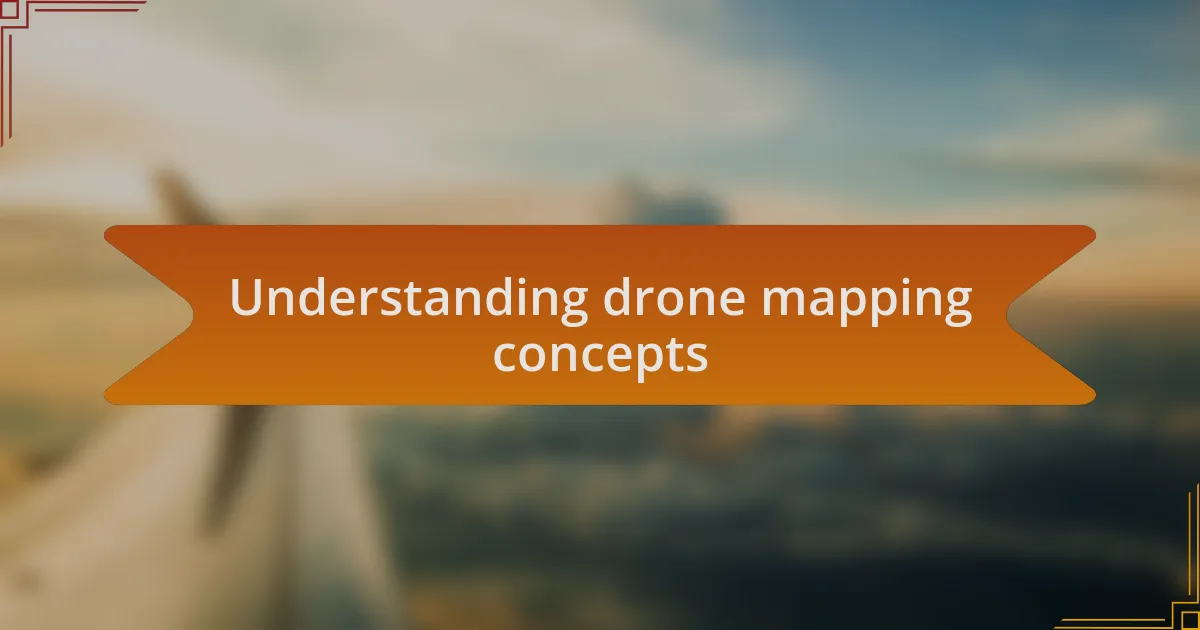
Understanding drone mapping concepts
When I first delved into drone mapping, I was amazed by its capacity to turn vast landscapes into detailed, interactive maps. This process involves collecting aerial images and using specialized software to stitch these images together. Have you ever stood at the edge of a beautiful vista and thought how much more you could appreciate it from above? That’s the essence of drone mapping—it offers a fresh perspective on familiar places.
One key concept in drone mapping is the importance of Ground Control Points (GCPs). During my initial projects, I often underestimated their significance, believing that the accuracy of GPS alone would suffice. But after discovering how GCPs anchor the aerial images to real-world locations, I realized they were the secret sauce to enhancing precision. Have you ever found yourself lost even with a map? That’s exactly what happens when you neglect GCPs; without them, you could find yourself with a beautifully crafted map that doesn’t reflect reality.
Understanding the various types of drone sensors is another crucial aspect of this field. I remember the first time I experimented with thermal sensors, hoping to capture images at night. The thrill of seeing the world in a new light was exhilarating. It made me wonder—how many ways can we interpret our surroundings with the right tools? Different sensors allow us to gather diverse data, transforming our ability to analyze and understand landscapes in ways we previously thought impossible.
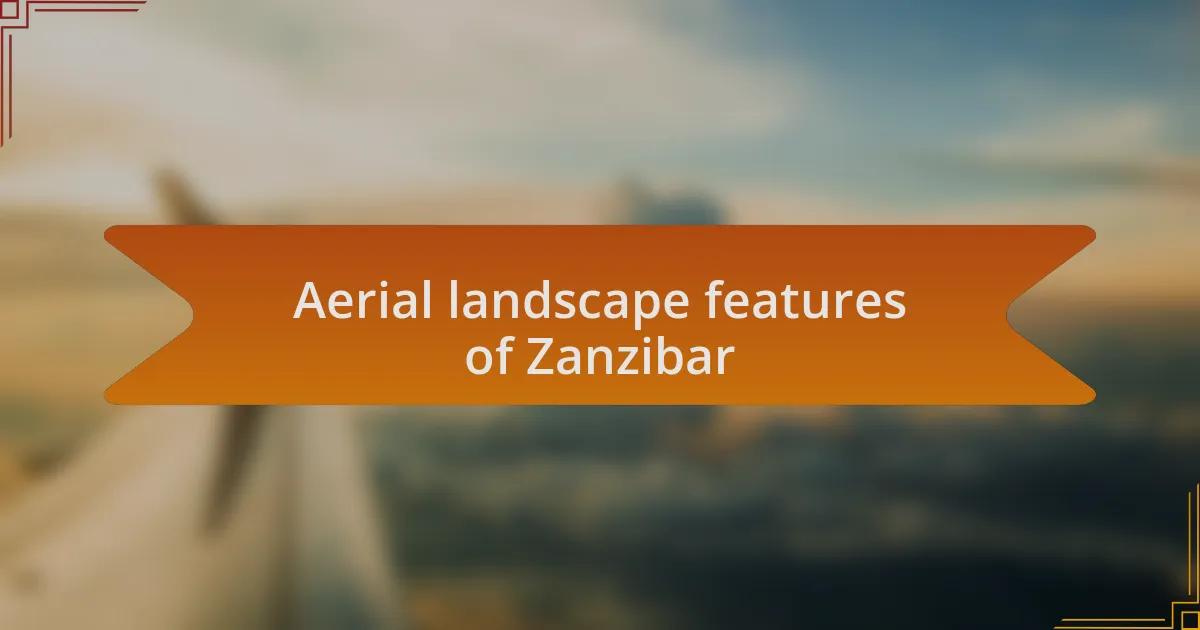
Aerial landscape features of Zanzibar
Zanzibar’s aerial landscape is a tapestry of vibrant colors and intricate patterns that tell the story of its rich topography. From the striking blue hues of the Indian Ocean to the lush greens of its tropical vegetation, I find myself captivated by how these elements come together in ways that are often missed from ground level. Have you ever gazed at a painting or photograph and felt the urge to step inside it? Aerial views provide that immersion, revealing hidden coves and winding coastlines that transform how you appreciate this beautiful island.
Flying above the iconic spice plantations, I am always struck by the orderly rows of crops, an arrangement that unveils Zanzibar’s agricultural legacy. The drone effortlessly captures the unique geometry of these fields, showcasing the contrast between the dark, rich soil and the verdant spices that flourish here. It’s fascinating to think about how our connection to food is enhanced when we see it from this perspective. How often do we take for granted the work that goes into every flavorful dish?
The historic Stone Town, visible from the sky, unfolds like a living museum—its intricate architecture and maze-like streets revealing a blend of cultures and histories. Viewing the town from above elicits a profound sense of nostalgia for me. As I watch shadows dance across the rooftops, I wonder how many stories linger in each corner of this UNESCO World Heritage Site. Have you ever felt that rush of curiosity to explore a place that’s rich with history? Aerial mapping offers that spark, inviting us to discover more than what meets the eye on the ground.
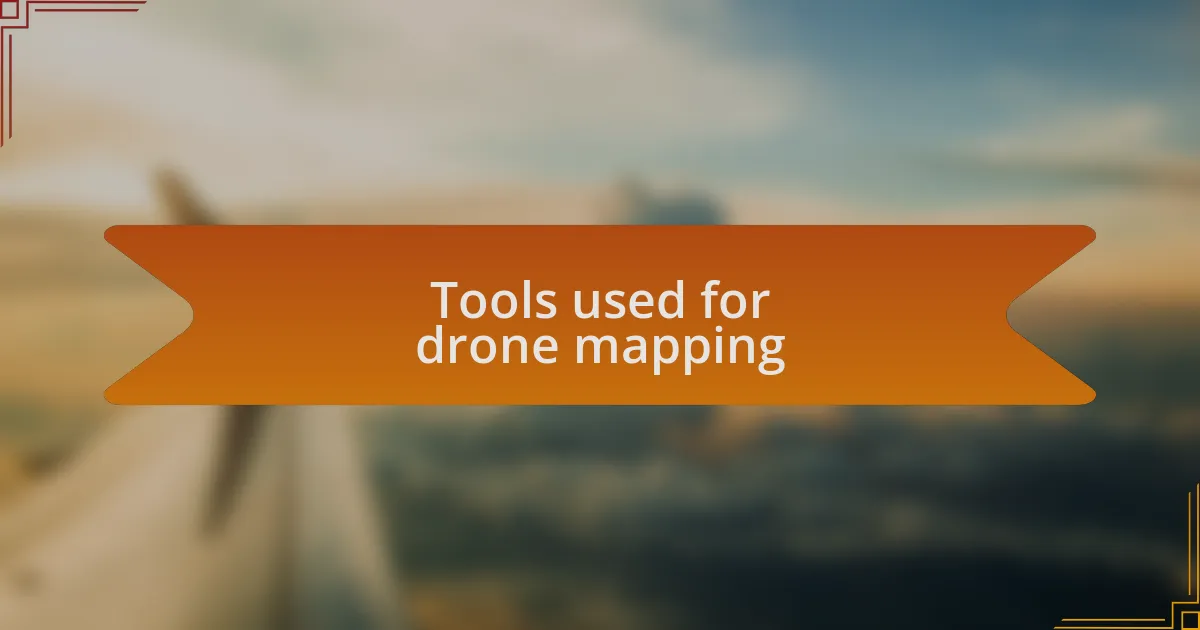
Tools used for drone mapping
When it comes to drone mapping, the technology behind it is as intriguing as the landscapes it captures. I remember my first experience using a high-resolution camera with a drone; the clarity was astounding. I could distinctly see the patterns of the coral reefs and the subtle shifts in land use—details I never noticed with the naked eye. This powerful combination of drone technology and quality imaging is essential for creating accurate and detailed maps.
Another key tool that I find indispensable is the software for processing the data collected by drones. Programs like Pix4D and DroneDeploy enable me to stitch together images seamlessly, transforming numerous snapshots into cohesive 3D models. Have you ever wondered how those stunning topographical maps come to life? It’s a beautiful blend of art and science—turning raw data into something comprehensible and visually appealing.
Lastly, geographic information systems (GIS) play a crucial role in analyzing the data. By layering information such as elevation, vegetation type, and land use, I can derive valuable insights about Zanzibar’s environment. It’s fascinating to consider how this combination of tools allows us to visualize the stories of these landscapes, capturing their essence in a way that traditional mapping simply cannot. Each pixel on the map becomes a key to understanding the island’s ecological narrative—what a profound and impactful journey this technology facilitates!
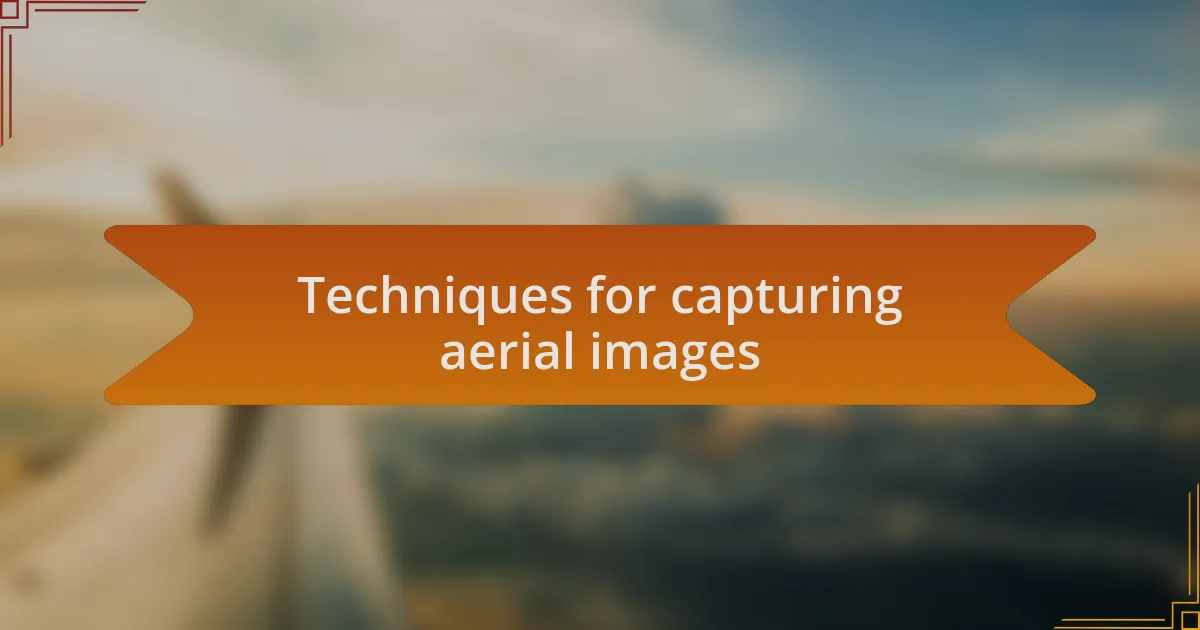
Techniques for capturing aerial images
To capture stunning aerial images, I often experiment with various flight techniques. For instance, flying at different altitudes can dramatically alter the perspective of the landscape below. I remember ascending just above the treetops and feeling a rush of excitement as I realized how the coral reefs contrasted with the deep blues of the ocean—a truly breathtaking sight that would have been impossible from the ground.
Another technique I rely on is the use of waypoint navigation. Setting predefined paths allows me to focus on framing each shot without the distraction of piloting the drone. On one occasion, while mapping a coastal area, I was able to capture an image of a migrating pod of dolphins. That moment reinforced for me the power of precision in aerial photography—having the freedom to anticipate and capture fleeting scenes in their natural habitat.
Moreover, I find that timing plays a crucial role in the quality of my images. Shooting during the golden hour, just before sunrise or after sunset, adds a magical glow to the landscapes. One evening, I was lucky enough to witness the sun setting behind a distant island, casting long shadows and vibrant hues across the water. It’s experiences like these that remind me how, with the right techniques, I can tell the story of a place through my lens in ways that resonate deeply with viewers.
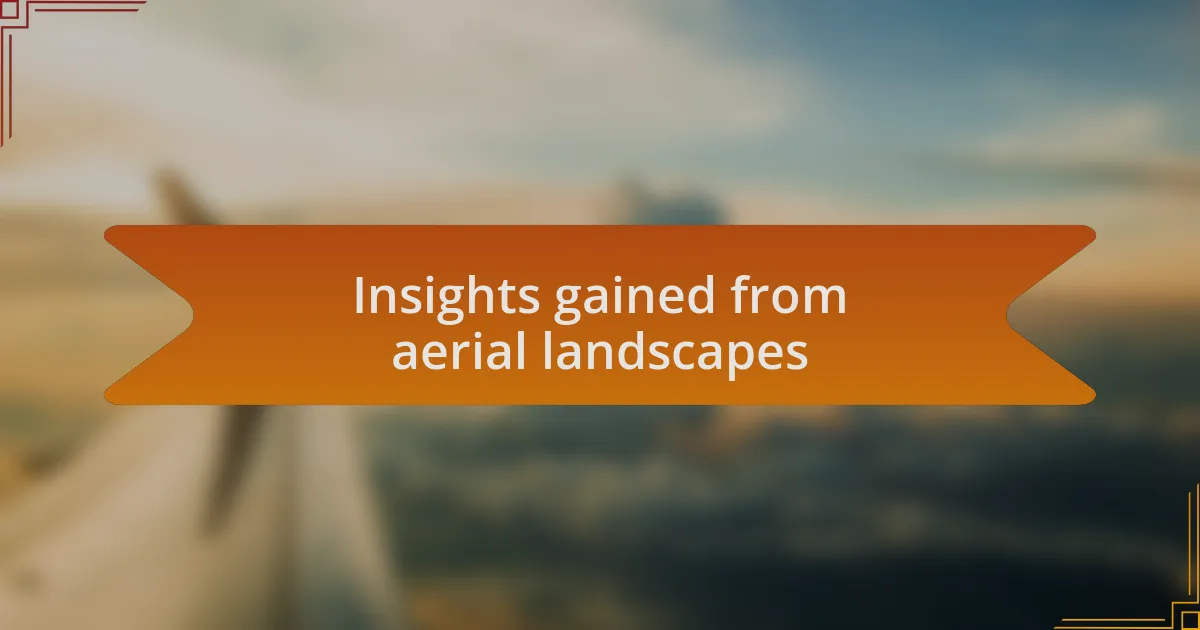
Insights gained from aerial landscapes
When I first started exploring aerial landscapes, I was surprised by how much detail I could uncover from above. For instance, during one of my early flights, I captured a vibrant patchwork of fields that revealed the intricate relationships between agricultural practices and the environment. It made me realize that these aerial views don’t just serve as stunning images; they tell stories about land use and human interaction with nature.
As I delved deeper into aerial photography, I discovered patterns that were invisible at ground level. One day, while surveying a lush part of the island, I couldn’t help but marvel at the way the natural landscape flowed around man-made structures. Seeing how urban development harmonizes—or clashes—with the surrounding environment sparked questions in me about sustainability and future land use. I began to understand that these aerial views can ignite conversations that matter, making us reconsider our impact on the earth.
The emotional connection I felt while capturing these landscapes was profound. On a calm morning above the beaches, watching the sunrise illuminate the shoreline, I felt a sense of peace and purpose. That moment reinforced my belief that these aerial perspectives are not merely about capturing beauty; they invite us to connect more deeply with our environment and provoke thoughts on how we preserve and cherish these stunning natural resources.